There are certain types of food that transcend culture. A recipe that is so basic, it is adopted by virtually every cuisine. One example I thought of recently was the egg custard. Americans have custard pies, the French have their creme caramel, the Spanish have flan, the Japanese have their own version of creme caramel, and of course the Chinese have dan ta (egg tarts).
More recently, I discovered the Æbleskiver, a Danish pastry that is sort of like a round pancake popover cross-over. Chad, the owner of Aunt Else's (a family run business), was passing out fresh, hot Æbleskiver samples at the Tasting Pavilion. They were divine! I couldn't stop eating them! And they also reminded me of some Asian versions of this cake . . . but more on that later.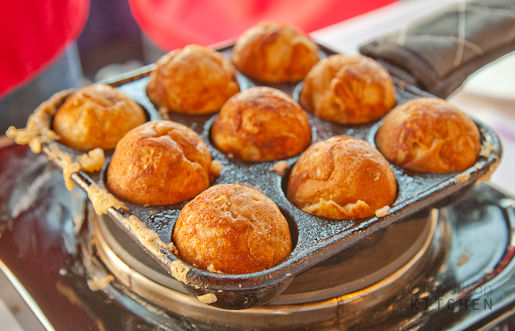
He offered to send me a free starter kit to review. I couldn't wait!
I received my starter kit about two weeks ago and I have been experimenting with it.
The first thing you have to do is to season the pan. As a cast-iron newbie, this was new to me. It's not too hard, though a bit messy. You coat the pan in a thin coat of vegetable oil and bake at 400 degrees for about an hour. Make sure to put a thin pan on the lower level to collect any stray oil drippings.
After an hour, the once dark gray pan becomes brownish and is considered "seasoned." It takes on non-stick qualities. You can handwash it, but don't stick it in the dishwasher. Of course, if this happens, you can always re-season by baking the pan again the same way.
Once you're ready to make the Æbleskivers, preheat the pan! This is really important!!!! The first time I tried this the pan was not hot enough and it was a MAJOR FAIL!!! And I had guests over too! It was so embarrassing. The batter stuck to the pan and became a goopy, embarrassing mess. My guests weren't too thrilled with the "bread pudding" that I set out in front of them. *sigh* Please learn from my mistake!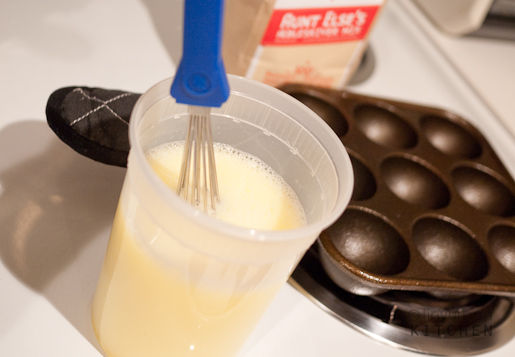
The second (successful) time, I put my electric stove at medium heat and heated the pan for at least 5 minutes, if not more.
The kit comes with a package of mix that's pretty easy to use. You just whisk together 3 eggs with 2 cups water. Then you stir in 2 ¾ cups of the mix. That's it. It's really easy. You don't even have to mix that hard - Chad says it's OK if the batter is a little lumpy.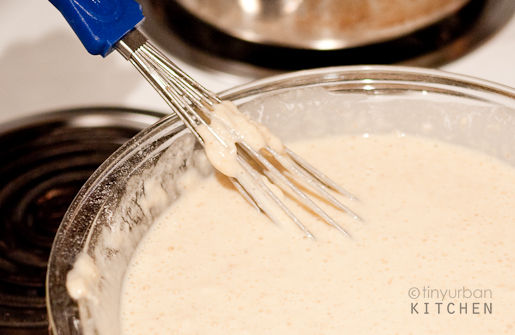
Fill each hole with a dime sized pool of vegetable oil. (Actually, looking back, it's probably better to add the oil in the beginning before you preheat the pan).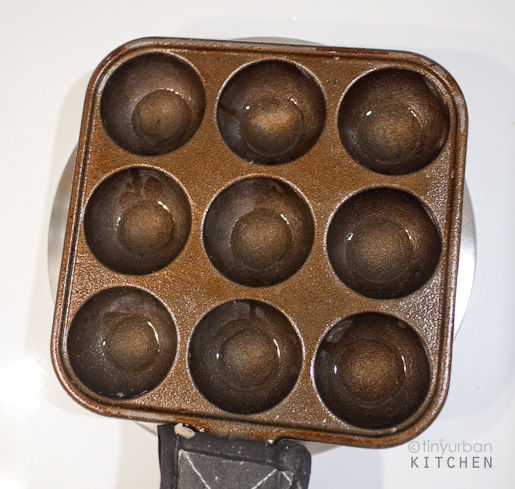
And once you're pretty sure your pan is hot, add the batter. If it's hot enough, it should sizzle like it's frying and the batter should bubble a bit. 
Let it cook for several minutes (at least 3 or so?)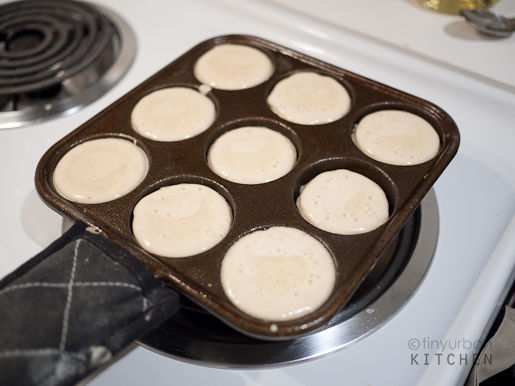
The next step is a bit tricky, but Chad has a great video that shows you exactly how to do this. Use a chopstick or knitting needle and flip the half-cooked batter (the edges should already be cooked) ¼ turn (90 degrees). 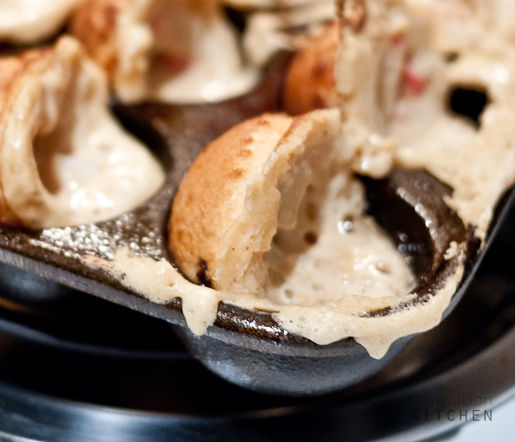
Let it cook for another minute or so, flipping ⅛ of a turn each time part touching the pan starts to dry up. This definitely takes some practice, and I don't think I've mastered it yet, which is why my Æbleskivers are not as beautiful as Chad's yet!
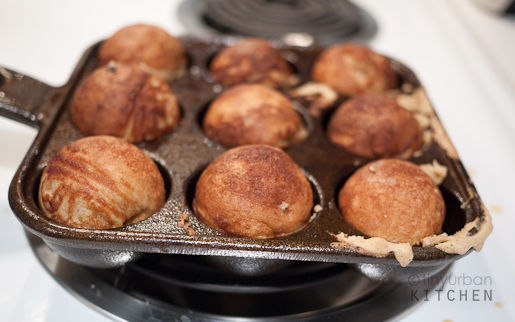
The Æbleskivers are done when a toothpick comes out cleanly after being inserted in the middle.
As I was looking at these Æbleskivers, it dawned on me that these look just like Japanese takoyakis! Takoyakis are savory octopus filled cakes that are very popular on the streets of Japan.
After doing some research, I realized that the recipes for takoyaki is eerily similar to the recipe for Æbleskiver. Inspired partly from this recipe, I decided to try adapting it by using the Æbleskivers mix.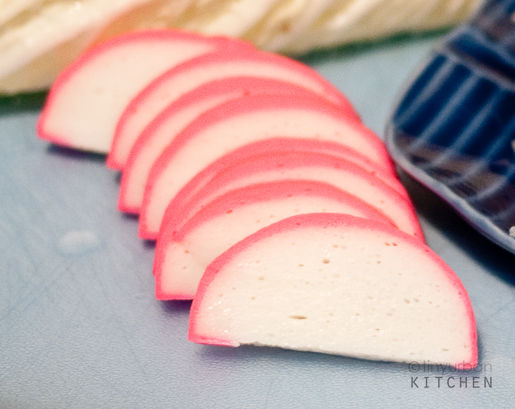
I replaced the water with dashi stock and filled the inside of the Æbleskiver with fish cake. Now, takoyaki is traditionally made with octopus (after all, tako means octopus in Japanese). However, octopus may not be that easy to come by in a normal supermarket, and Maki from Just Hungry says that you can substitute the octopus with other things, such as squid, fish cake, or even cut up hot dogs!
Takoyaki Recipe
2 ¾ cups Aunt Else's mix
3 eggs
2 cups dashi stock
optional (2 teaspoon soy sauce)
cooked octopus leg, cut up into small, 1 cm cubes
Notes
Depending on how salty your filling is, you may not need the soy sauce. I did not add any. Although it was a bit light, I thought it tasted OK. It also depends on how salty your dashi stock is.
I made my own dashi stock (I'll post a tutorial soon), but you can also use store bought hondashi powder and make stock that way. It's faster and more convenient, but most likely has MSG and more salt.
If you don't have the Æbleskivers mix, you can always use staple ingredients using this recipe.
Here's a picture of the takoyakis cooking with the kamaboko (Japanese fish cake) inside.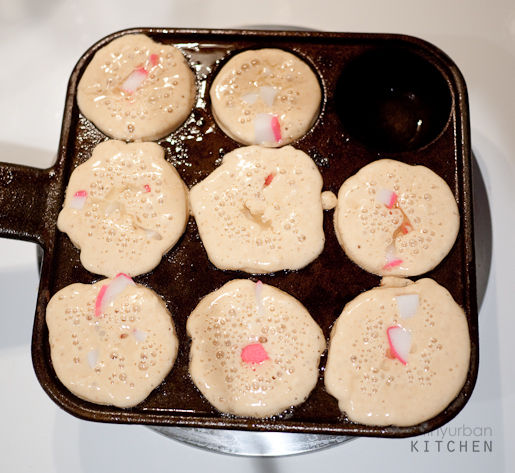
Success!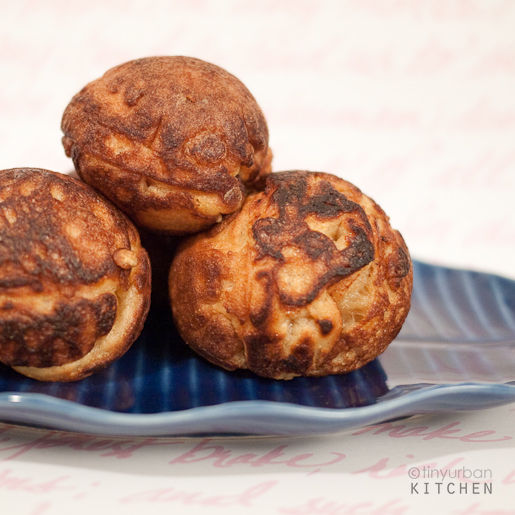
This pan is really versatile, and you can definitely use it to make either Æbleskivers or Takoyakis. I think the holes are bigger than those in a typical takoyaki pan, so you'd be making larger takoyakis. In any event, the finished cakes are delicious! Maybe I'll try those mini-circular Chinese egg cakes next! Again, another one of those foods that transcends multiple cultures. Popovers anyone? 🙂
The pans are made in Minnesota and have a lifetime warranty. The mix is all organic as well.
The Æbleskivers (or Takoyakis!!!) are best enjoyed hot, but can be reheated in a toaster oven to regain that beautiful crispy crust. I had them for breakfast this whole week. Yum.
Right now, Aunt Else's is generously offering a 10% discount to all Tiny Urban Kitchen readers if you fan or follow Aunt Else's on Facebook, Twitter, or Foodbuzz. You can also visit them at their Foodzie store here. To apply the discount, just type "Tiny Urban Kitchen" and the fan/follow option you chose in the "add special instructions to seller" box during checkout. Plus, right now, there is free Priority Mail shipping anywhere in the US for orders over $50.
All Rights Reserved

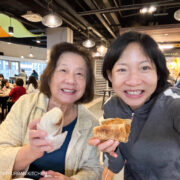
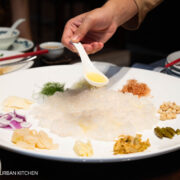
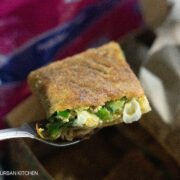
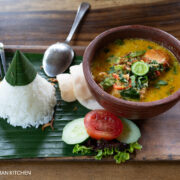


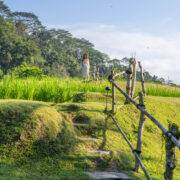
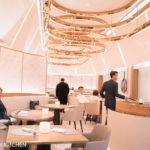
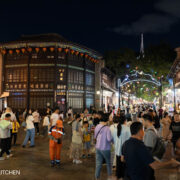
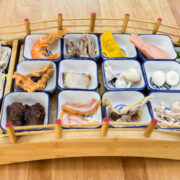
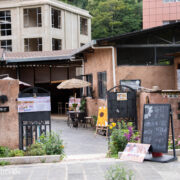
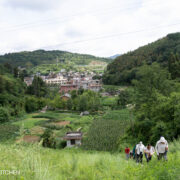
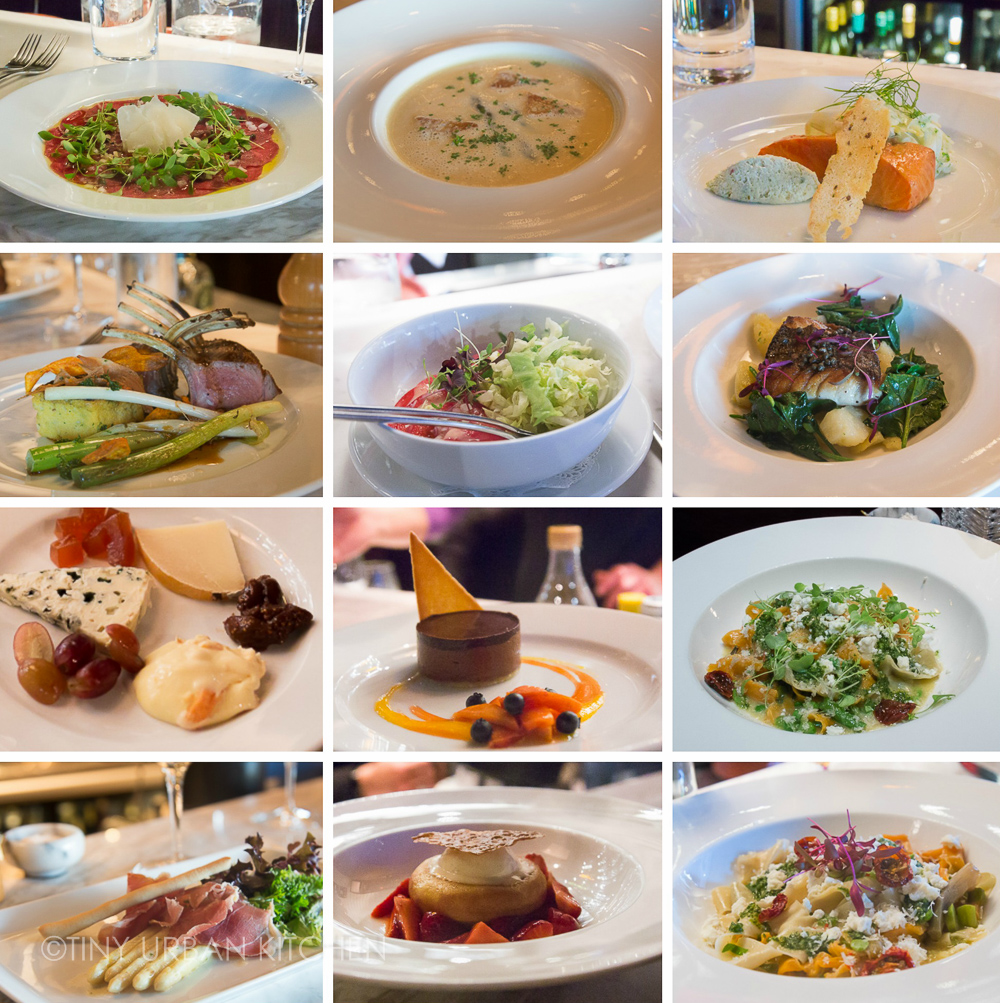
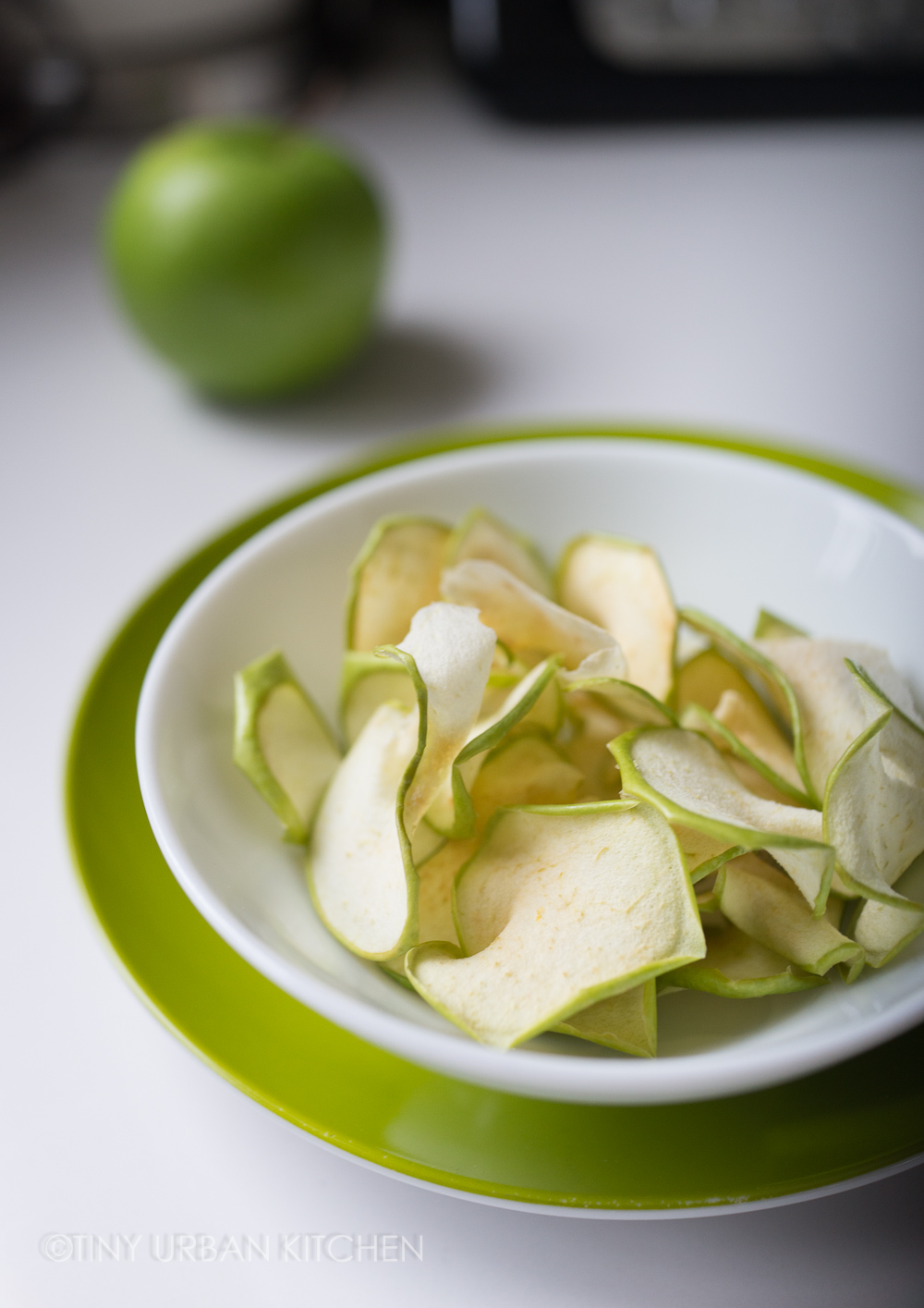
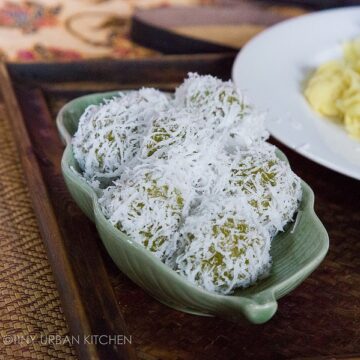
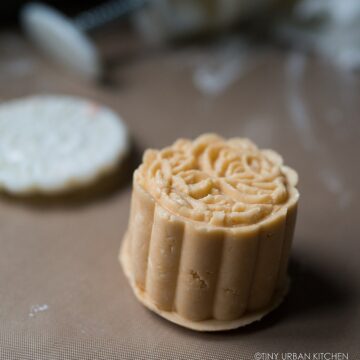
[…] were chewy, intense, quite salty, and gave a jolt of umami. Soon afterwards, these cute little Æbleskiver appeared, topped with uni and filled with red pepper puree. Traditionally, Æbleskiver is a […]